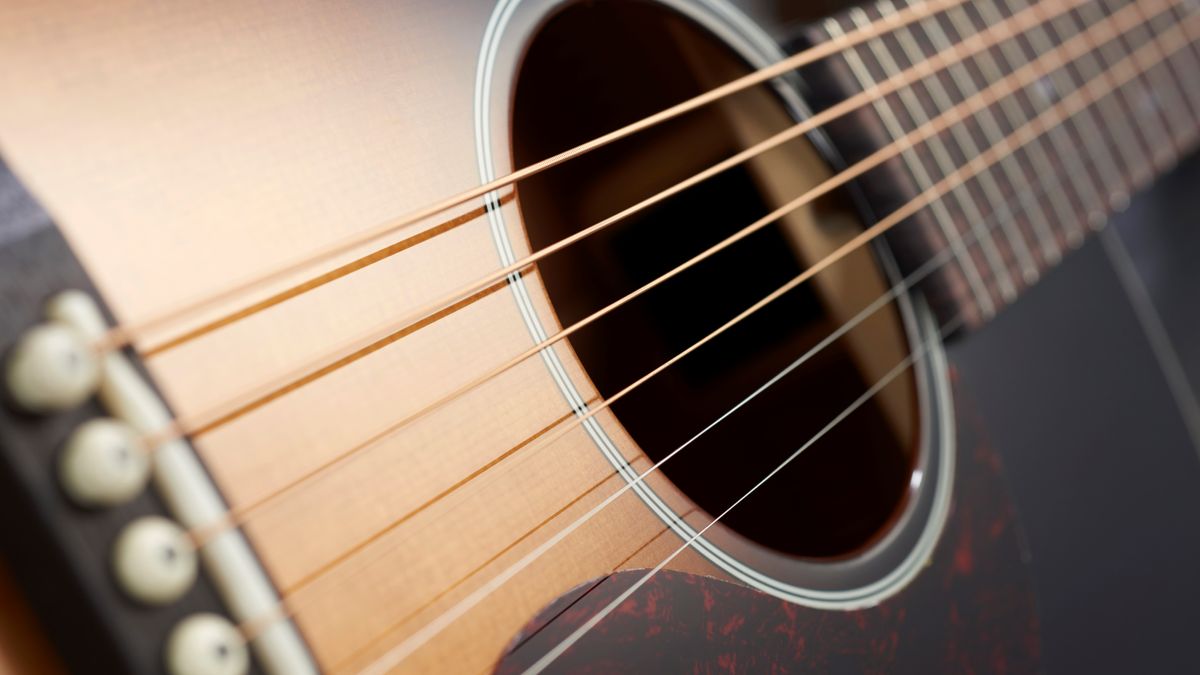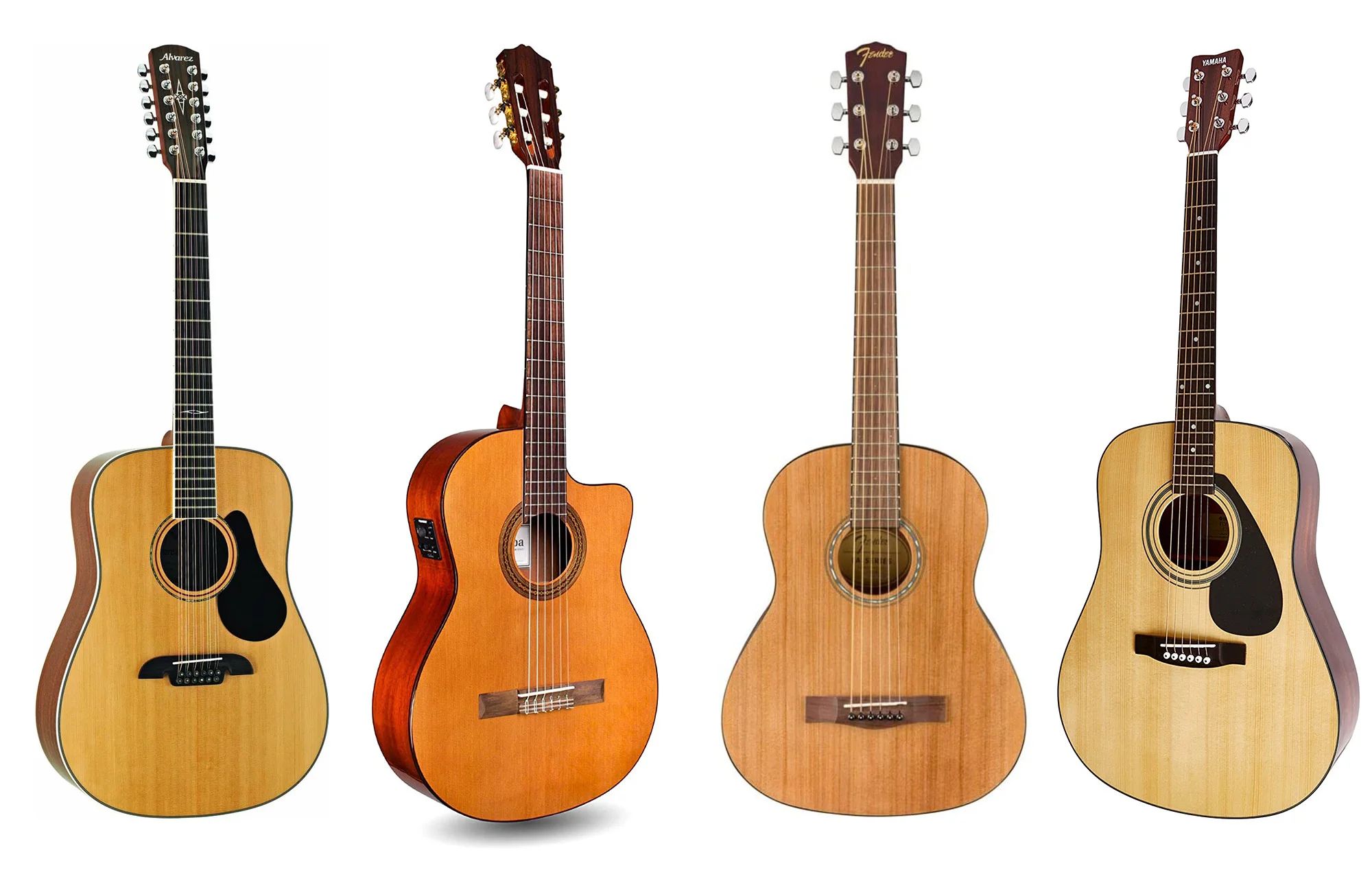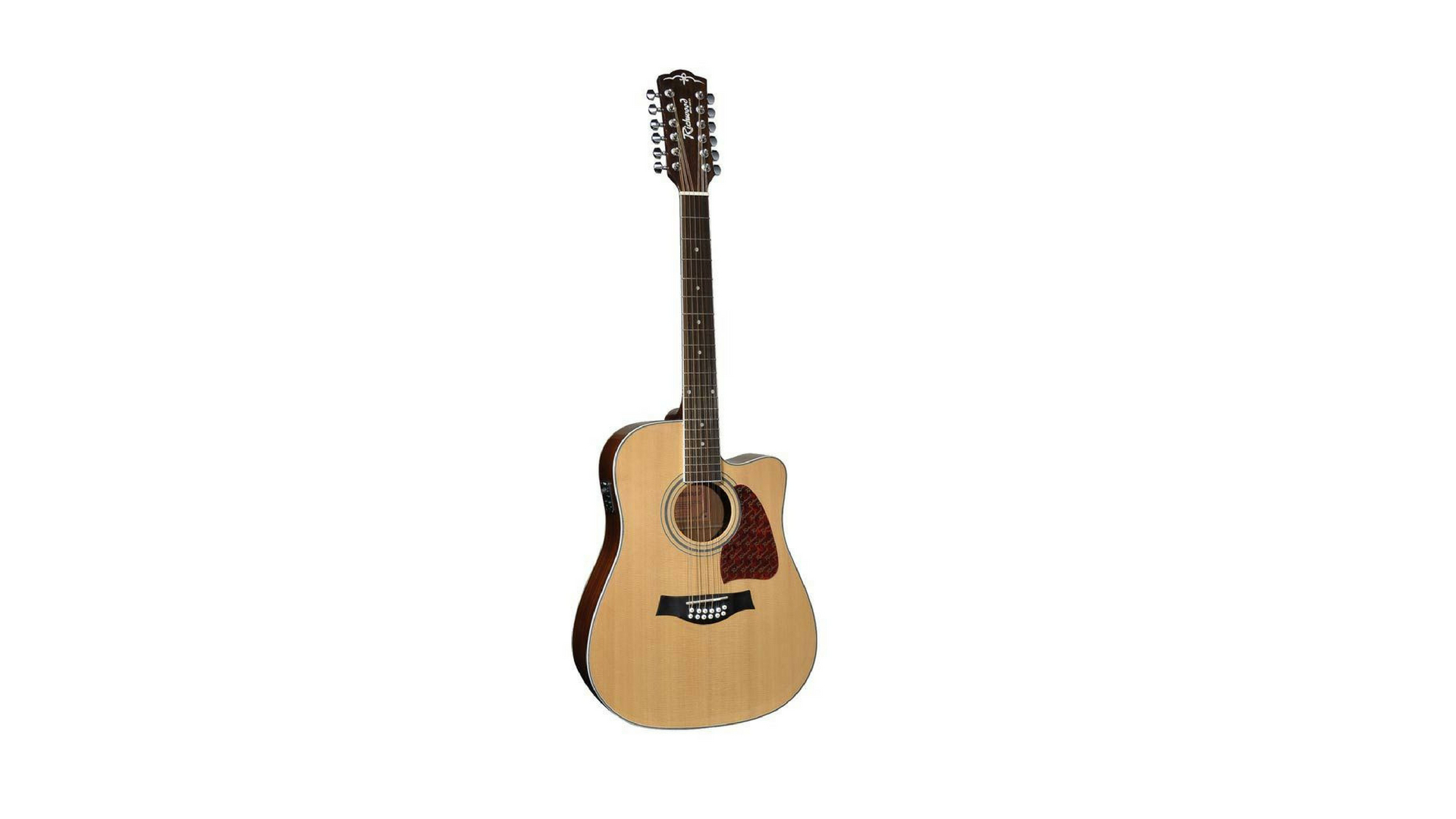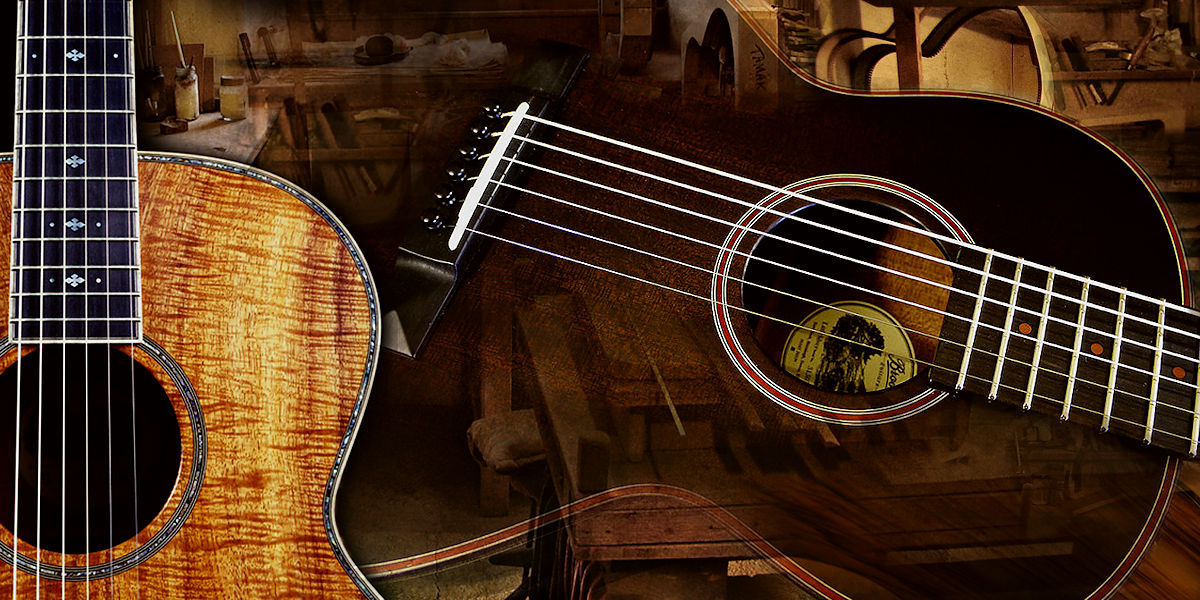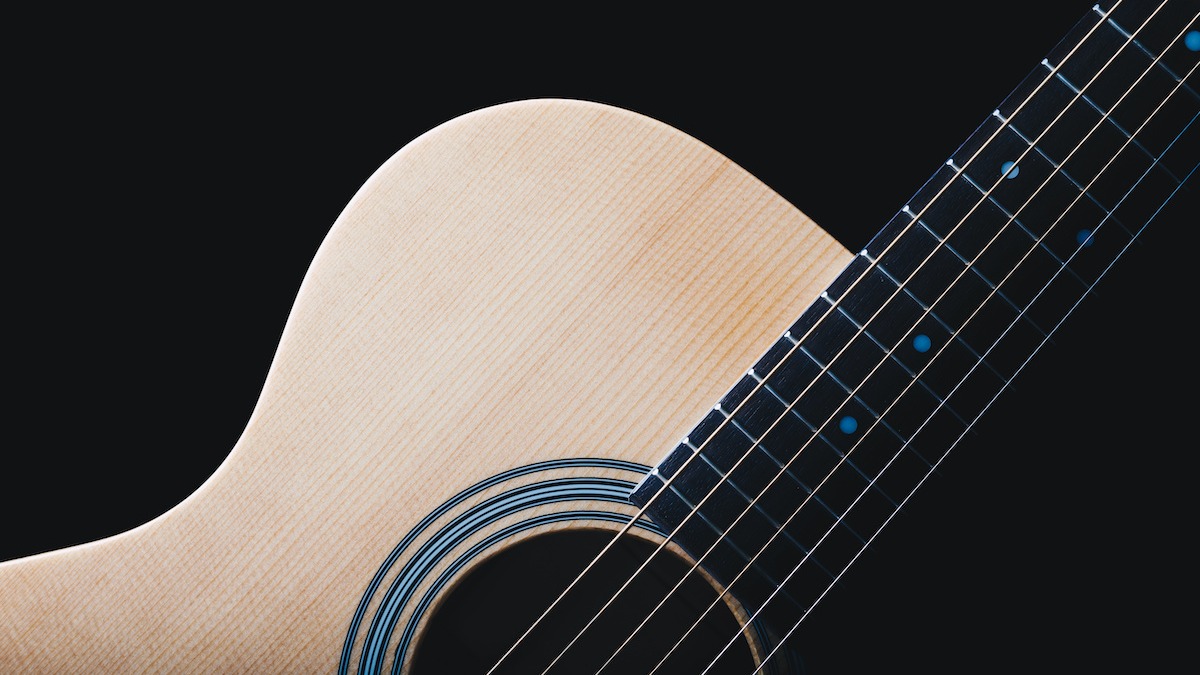Introduction
When it comes to acoustic guitars, there are various aspects to consider, including the number of strings. The number of strings on an acoustic guitar not only affects the sound and playability but also opens up a world of creative possibilities for musicians. In this article, we will dive into the world of acoustic guitar strings, exploring the different types and configurations.
Whether you are a novice guitarist looking to purchase your first instrument or a seasoned player curious about new string configurations, understanding the options available can help you make an informed decision.
The strings on an acoustic guitar play a vital role in determining the overall tone and resonance of the instrument. Standard acoustic guitars typically come with either six or twelve strings, although variations exist beyond these traditional configurations.
In this article, we will explore the advantages and disadvantages of both six-string and twelve-string guitars, as well as touch upon other less common string configurations. By the end, you will have a clearer understanding of the different options available and which one might suit your musical preferences and playing style.
So, whether you are a strummer, fingerpicker, or a guitarist looking to experiment with new sounds, let’s delve into the fascinating world of acoustic guitar strings and discover how the number of strings can influence your playing experience.
Different Types of Acoustic Guitars
Before we delve into the specifics of the number of strings on an acoustic guitar, it’s essential to understand the different types of acoustic guitars available. This knowledge will provide valuable context for understanding the various string configurations.
There are several common types of acoustic guitars, each with its own unique characteristics and purposes:
- Dreadnought: The dreadnought is one of the most popular and widely recognized acoustic guitar shapes. It has a large body, producing a loud and robust sound, making it ideal for strumming and accompaniment.
- Concert: The concert guitar is slightly smaller than the dreadnought and produces a balanced and versatile sound. It is suitable for various playing styles and is a popular choice among fingerstyle players.
- Grand Auditorium: The grand auditorium combines elements of the dreadnought and concert guitar, resulting in a versatile instrument with a well-balanced tone. It offers a comfortable playing experience and suits a wide range of musical genres.
- Jumbo: As the name suggests, jumbo guitars have a large, rounded body, which enhances their volume and bass response. They produce a booming sound that is well-suited for rhythm playing and genres such as country and folk.
- Parlor: Parlor guitars have a smaller, compact body, making them comfortable to play and easy to transport. Although they have a quieter projection, they offer a unique and intimate tone that is perfect for fingerstyle playing and singer-songwriters.
Each of these acoustic guitar types can come with different string configurations, including both six-string and twelve-string options. Understanding the characteristics of these guitar styles will provide insight into how the number of strings can affect their sound and performance.
Now that we have a basic understanding of the different acoustic guitar types let’s dive into the specifics of the number of strings on an acoustic guitar and how it can impact your playing experience.
Standard Acoustic Guitar Strings
Before we explore the different configurations of acoustic guitar strings, it’s important to understand the standard string setup. In its traditional form, an acoustic guitar typically comes equipped with a set of six strings. These strings are arranged in a specific order, each serving a unique purpose in producing the desired sound.
The standard tuning for a six-string acoustic guitar, from lowest to highest pitch, is E, A, D, G, B, and E. This arrangement allows for a wide range of musical possibilities, accommodating various playing styles and genres.
The strings themselves are typically made of steel or a combination of steel and nickel. Steel strings offer a bright and crisp tone, making them ideal for genres such as folk, country, and rock. On the other hand, strings with a steel core and nickel winding provide a warmer and more balanced tone, often preferred by jazz and blues players.
It’s worth noting that the gauge, or thickness, of the strings can vary. Lighter gauge strings are easier to play and can produce a brighter tone, while heavier gauge strings offer a fuller sound with increased sustain.
Players can also experiment with different brands and string materials to find the sound and feel that best suits their preferences. Coated strings, for example, have a longer lifespan and retain their tone for a more extended period, while phosphor bronze strings offer a rich and well-rounded sound.
Now that we understand the standard setup of an acoustic guitar with six strings, let’s explore another popular string configuration: the twelve-string acoustic guitar.
Number of Strings on an Acoustic Guitar
When it comes to the number of strings on an acoustic guitar, the two most common configurations are six-string and twelve-string guitars. Each option offers its own unique characteristics, creating distinct sonic possibilities for guitarists.
Let’s start with the six-string acoustic guitar, which is considered the standard configuration. As mentioned earlier, the strings on a six-string acoustic guitar are typically tuned to E, A, D, G, B, and E, from lowest to highest pitch.
This arrangement allows for a wide range of chords, melodies, and playing techniques. The six-string guitar is versatile and suitable for a variety of musical styles, including folk, rock, pop, blues, and more. It provides a balanced sound and is often the go-to choice for beginners and experienced players alike.
On the other hand, the twelve-string acoustic guitar offers a richer and more resonant sound. As the name suggests, this type of guitar features twelve strings, arranged in courses of two strings each. The courses consist of two strings tuned in unison, apart from the lower two courses, which have one string in unison and one string in an octave configuration.
The twelve-string guitar produces a lush, chorus-like effect, thanks to the doubled strings. This creates a fuller and more vibrant sound, adding depth and complexity to chords and melodies. It’s commonly used in genres such as folk, country, and rock, where the shimmering and harmonically rich tones can greatly enhance the music.
It’s worth noting that playing a twelve-string guitar requires some adjustments in technique. The wider neck and increased string tension can pose challenges for beginners and players accustomed to six-string guitars. However, with practice and familiarity, the unique timbre of the twelve-string guitar can open up new creative possibilities.
Both the six-string and twelve-string acoustic guitars have their advantages and serve different musical purposes. The choice of which configuration to use ultimately depends on personal preference, playing style, and the desired sound.
Now that we’ve explored the basics of the six-string and twelve-string acoustic guitars, let’s delve deeper into the advantages and disadvantages of each configuration to help you make an informed decision.
Six-String Acoustic Guitars
Six-string acoustic guitars are the most common and widely used configuration among guitarists. As mentioned earlier, these guitars have six strings that are typically tuned to E, A, D, G, B, and E. Let’s explore the advantages and characteristics of six-string acoustic guitars.
1. Versatility: Six-string acoustic guitars offer a wide range of musical possibilities and versatility. They are suitable for various playing styles, including strumming, fingerpicking, and soloing. Whether you’re playing rhythm or lead, a six-string guitar can accommodate your playing needs.
2. Easier to Play: The six-string configuration provides a comfortable playing experience, especially for beginners. The narrower neck and lighter string tension make it easier to fret notes and chord shapes, allowing for smoother transitions and faster learning curves.
3. Greater Access to Learning Resources: Since six-string acoustic guitars are the standard, there is an abundance of learning materials, tutorials, and resources available for beginners and experienced players. You’ll find a vast library of songs, chords, and techniques specifically designed for the six-string guitar.
4. Wide Range of Styles: Whether you enjoy strumming catchy pop tunes, fingerpicking intricate folk melodies, or shredding electric-style solos on an acoustic guitar, the six-string configuration has you covered. It’s suitable for a broad spectrum of musical genres, including folk, rock, pop, blues, and more.
Despite their numerous advantages, there are a few considerations to keep in mind when it comes to six-string acoustic guitars:
1. Limited Chord Voicings: With only six strings, the chord voicings on a six-string guitar can be somewhat limited compared to a twelve-string guitar. This can affect the overall richness and fullness of certain chords and harmonic textures.
2. Less Resonance: While the six-string guitar produces a balanced and pleasing tone, it may not have the same level of resonance and depth as a twelve-string guitar. The additional strings on the twelve-string guitar create a more layered and vibrant sound.
Despite these limitations, the six-string acoustic guitar remains incredibly versatile and suitable for a wide range of musical styles and playing techniques. It is a reliable and popular choice for both beginners and experienced guitarists alike.
Now that we’ve explored the world of six-string acoustic guitars, let’s move on to another intriguing configuration: the twelve-string acoustic guitar.
Twelve-String Acoustic Guitars
Twelve-string acoustic guitars offer a unique and mesmerizing sound that sets them apart from their six-string counterparts. As the name suggests, these guitars have twelve strings, arranged in courses of two strings each. Let’s explore the advantages and characteristics of twelve-string acoustic guitars.
1. Rich and Full Sound: The doubled strings on a twelve-string guitar result in a more complex and resonant tone. The additional strings provide a natural chorus-like effect, creating a rich, full-bodied sound that adds depth and texture to chords and melodies.
2. Enhanced Harmonic Presence: The twelve-string configuration produces a naturally vibrant and harmonically rich sound. The overlapping resonances of the doubled strings create a lush and shimmering effect, enhancing the overall tonal presence of the instrument.
3. Wide Range of Musical Styles: Twelve-string acoustic guitars are commonly associated with folk, country, and rock music. Their unique sound is well-suited for strummed rhythms, arpeggiated fingerpicking patterns, and intricate chord embellishments. Guitarists like Jimmy Page, Pete Townshend, and Leo Kottke have showcased the expressive potential of twelve-string guitars in their music.
4. Captivating Melodies and Solos: The doubled strings on a twelve-string guitar create a fuller and more resonant sound when playing melodies and solos. This added depth and richness allow for more expressive and captivating playing, making the guitar stand out in an ensemble setting.
While the twelve-string acoustic guitar offers many advantages, there are a few considerations to keep in mind:
1. Higher String Tension: Due to the additional strings, twelve-string acoustic guitars have higher string tension compared to six-string guitars. This can make them slightly more challenging to play, especially for beginners or players used to the lighter tension of a six-string guitar.
2. Wider Neck: The twelve-string guitar usually has a wider neck to accommodate the doubled strings. This can require some adaptation in fingering and chord shapes, which may take time to get used to. However, once players adjust to the wider neck, they can take advantage of the unique sonic possibilities offered by the twelve-string configuration.
Twelve-string acoustic guitars are a fantastic choice for guitarists seeking a distinct and captivating sound. From lush strummed chords to intricate fingerpicked melodies, these guitars offer a world of possibilities for creative expression.
Now that we’ve explored the enchanting world of twelve-string acoustic guitars, let’s briefly touch upon other less common string configurations that some guitarists might consider.
Advantages and Disadvantages of Six and Twelve-String Guitars
Both six-string and twelve-string acoustic guitars have their own unique advantages and disadvantages. Understanding these can help you determine which configuration is best suited for your musical preferences and playing style.
Six-String Acoustic Guitars:
Advantages:
- Versatility: Six-string guitars offer a wide range of musical possibilities and are suitable for various playing styles and genres.
- Easier to Play: The narrower neck and lighter string tension make six-string guitars easier to fret and play, especially for beginners.
- Accessible Learning Resources: There are plentiful learning materials and resources available specifically designed for six-string guitars.
Disadvantages:
- Limited Chord Voicings: With only six strings, some chord voicings may sound less rich or full compared to twelve-string guitars.
- Less Resonance: The six-string configuration may not provide the same level of resonance and depth as twelve-string guitars.
Twelve-String Acoustic Guitars:
Advantages:
- Rich and Full Sound: The doubled strings create a more complex and resonant tone, adding depth and texture to chords and melodies.
- Enhanced Harmonic Presence: The overlapping resonances of the doubled strings produce a vibrant and harmonically rich sound.
- Captivating Melodies and Solos: The fuller sound of the twelve-string configuration makes melodies and solos stand out.
Disadvantages:
- Higher String Tension: The additional strings result in higher string tension, making twelve-string guitars slightly more challenging to play.
- Wider Neck: The wider neck of twelve-string guitars may require some adjustment in fingering and chord shapes.
Ultimately, the choice between a six-string and twelve-string acoustic guitar depends on personal preference, musical style, and the desired sound. Six-string guitars are versatile, accessible, and suitable for a wide range of musical genres. On the other hand, twelve-string guitars offer a rich and resonant sound with enhanced harmonic presence, making them a popular choice for folk, country, and rock musicians.
Consider your playing ability, musical goals, and the specific characteristics of each configuration to decide which type of acoustic guitar best suits your needs.
Now, let’s briefly touch upon other less common string configurations that some guitarists might consider.
Other String Configurations
While the six-string and twelve-string configurations are the most common on acoustic guitars, there are also other string configurations that some guitarists choose to explore. These alternative string setups offer unique sounds and can open up new avenues for musical expression. Let’s briefly explore some of them:
Seven-String Guitars: Seven-string guitars have an additional low B string, extending the range of the instrument. This configuration is popular in genres like metal and jazz, where the lower range adds depth and heaviness to the sound.
Eight-String Guitars: Eight-string guitars feature an extra low F# string, providing an even broader range. This configuration is ideal for players who want to explore extended-range chords and have access to even lower notes for heavy riffing and complex compositions.
Nylon-string Guitars: While nylon-string guitars are commonly associated with classical and flamenco music, they can also be found in folk and jazz. The strings on these guitars are made of nylon or a nylon-like material, providing a warm and mellow tone compared to steel-string guitars.
Custom String Configurations: Some guitarists choose to experiment with custom string setups, combining different gauges or adding unique string combinations to their guitars. This allows for more personalized and tailored playing experiences, catering to specific musical preferences and styles.
It’s important to note that these alternative string configurations may require adjustments in playing technique and style. The wider necks, different string tensions, and extended range can present challenges and opportunities for musicians to explore.
When considering these alternative string configurations, it’s crucial to assess your musical goals, playing style, and the specific sound you wish to achieve. Experimenting with different setups can be an exciting journey of self-expression and creativity.
Now that we’ve explored the main string configurations and some alternative options, let’s summarize the key takeaways and conclude our exploration of the number of strings on acoustic guitars.
Conclusion
Understanding the number of strings on an acoustic guitar is vital for any guitarist looking to explore different sounds and playing styles. The two most common configurations are the six-string and twelve-string guitars, each offering its own advantages and characteristics.
The six-string acoustic guitar is the standard configuration, providing versatility, ease of play, and access to a wide range of learning resources. It is an excellent choice for beginners and experienced players across various genres.
The twelve-string acoustic guitar, with its doubled strings and rich, full sound, offers a unique and captivating sonic experience. It shines in genres like folk, country, and rock, where its distinctive harmonies add depth and texture to chords and melodies.
While the six-string and twelve-string guitars dominate the acoustic guitar landscape, there are also other string configurations, such as seven-string and eight-string guitars, as well as custom setups, that allow for even more creative exploration.
Ultimately, the choice of string configuration comes down to personal preference, musical style, and desired sound. Whether you prefer the versatility of the six-string guitar or the lush harmonies of the twelve-string guitar, both options offer endless possibilities for musical expression and enjoyment.
As you embark on your guitar journey, I encourage you to consider the number of strings on an acoustic guitar as just one aspect of your musical exploration. The joy of playing the guitar lies not only in the equipment but also in the dedication and passion you bring to your practice and the melodies you create.
So, whether you strum a six-string, pluck a twelve-string, or venture into alternative string configurations, embrace the beauty of acoustic guitar playing and allow your creativity to soar.
Now, pick up that guitar, find your tune, and let the strings guide you on a musical adventure of a lifetime!







